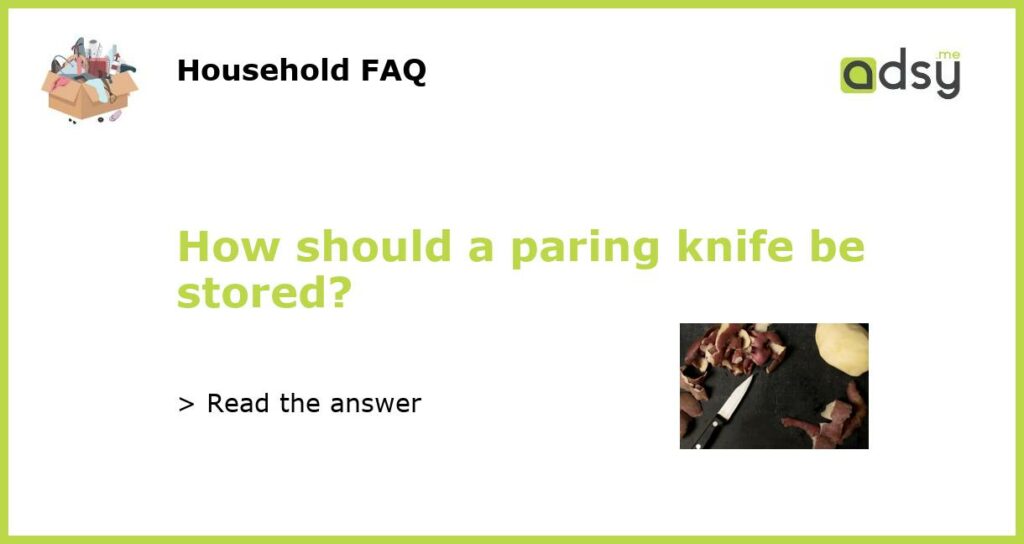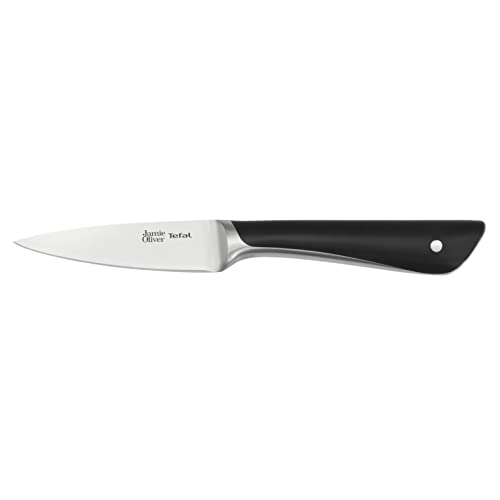The Importance of Proper Paring Knife Storage
A paring knife is an essential tool in every kitchen. From peeling fruits and vegetables to intricate cutting tasks, this versatile knife sees a lot of action. However, to ensure the longevity and sharpness of your paring knife, proper storage is crucial. In this article, we will explore the best ways to store a paring knife.
Avoiding Blade Damage: The Do’s and Don’ts
When it comes to storing a paring knife, the key is to protect the blade from damage. Here are some important do’s and don’ts to consider:
- Do: Store your paring knife in a knife block or a knife roll specifically designed for cutlery. These options provide individual slots or pockets for each knife, preventing the blades from coming into contact with other utensils.
- Don’t: Store your paring knife in a drawer without any protective sheath or cover. The blade can easily get scratched or dented when it rubs against other objects.
- Do: Keep the blade clean and dry before storing. This reduces the risk of rust or corrosion.
- Don’t: Place your paring knife in a utensil jar or container with other sharp objects. The blade can get easily damaged when jostled against other knives or utensils.
Utilizing Sheaths and Blade Guards
One of the best ways to store a paring knife safely is by using a sheath or a blade guard. These protective covers are often provided with the knife upon purchase. Here’s how they can help:
- Sheaths: A sheath is a plastic or leather cover that fits snugly over the blade. It not only protects the blade from damage but also ensures safety during storage and transportation.
- Blade Guards: Blade guards are usually made of plastic and cover the entire length of the blade. They are designed to prevent accidental cuts and protect the blade from scratches.
When using a sheath or blade guard, always make sure the blade is completely dry to avoid moisture buildup that can lead to rust or bacterial growth.
Considering Magnetic Knife Strips
If you prefer a more visually appealing storage option, magnetic knife strips are worth considering. These strips are mounted on the wall and use magnets to hold the knives securely in place. Here are some benefits of using magnetic knife strips:
- Easy Accessibility: Knives stored on a magnetic strip are easily accessible, saving valuable counter space and allowing for quick retrieval when needed.
- Visibility: With your knives on display, you can easily see which knife you need without rummaging through a drawer or knife block.
- Proper Air Circulation: Unlike in a drawer, knives stored on a magnetic strip are exposed to air, which helps to keep them dry and prevent the growth of rust or mold.
It is important to note that when using a magnetic strip, ensure the knives are securely attached and positioned away from children’s reach.
Exploring Knife Rolls and Cases
For professional chefs or those who travel with their cooking tools, a knife roll or case is an excellent storage solution. These storage options offer individual compartments for each knife and provide additional protection during transit. Here’s why knife rolls and cases are beneficial:
- Portability: Knife rolls and cases allow you to transport your paring knife and other cutlery safely and conveniently.
- Organization: The compartments in a knife roll or case ensure each knife has its designated spot, preventing blades from touching each other.
- Added Protection: The sturdy material of knife rolls and cases shields the blades from potential damage while on the move.
Knife rolls and cases also come in various sizes and designs, catering to different knife collections and personal preferences.






